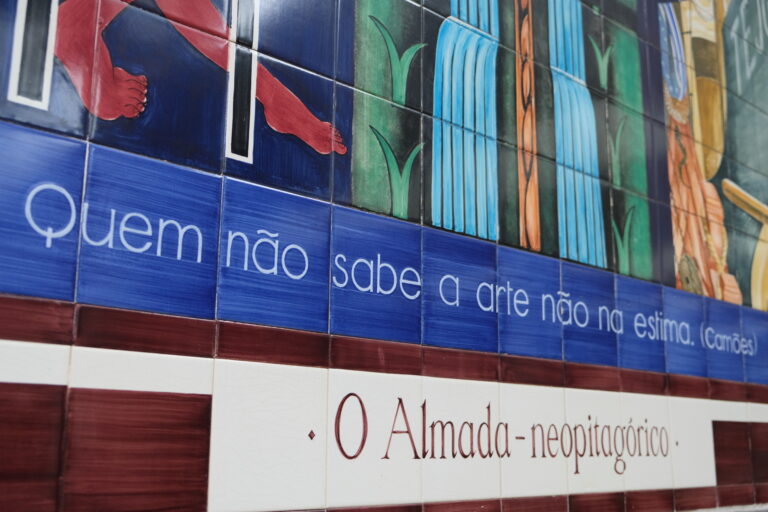Nestled within the bustling heart of Lisbon, Rossio Station stands not only as a vital transportation hub but also as an unexpected gallery, its walls adorned with a breathtaking display of azulejos – the iconic Portuguese painted tiles. 1 For those who pause amidst the comings and goings, these intricate artworks offer a glimpse into Portugal’s rich artistic heritage and the country’s deep connection to the sea.
The most striking feature of Rossio Station’s interior is undoubtedly the vast expanse of undulating white and blue tiles that grace the walls. This mesmerizing pattern, resembling gentle waves or perhaps the scales of a mythical sea creature, creates a dynamic and fluid atmosphere within the station. The play of light across the glossy surfaces adds depth and movement, transforming the functional space into something truly captivating.
While the overall effect of the swirling blue and white is immediately apparent, the beauty lies also in the subtle variations and the sheer scale of the undertaking. Each individual tile, though part of a larger cohesive design, carries slight nuances in tone and application, a testament to the handcrafted nature of azulejo artistry. This imbues the artwork with a sense of organic beauty, far removed from mass-produced uniformity.
Interestingly, these prominent wave-like azulejos, which define the station’s aesthetic, were not part of the station’s original late 19th-century construction. Instead, they were added during renovations in the latter half of the 20th century.
However, the artistic story of Rossio Station’s tiles extends beyond this dominant aquatic theme. Look closer, and you’ll discover other tile panels, some depicting historical scenes or more abstract designs, hinting at different periods and artistic styles that have contributed to the station’s visual narrative over time.
One notable contribution to Lisbon’s metro system, including potentially earlier tile work within the Rossio metro station accessible through the main train station, comes from the renowned Portuguese artist Maria Keil (1914-2012). A pioneer in bringing a modern sensibility to the traditional art of azulejos, Keil was commissioned to decorate several of Lisbon’s early metro stations. Her work is characterized by a “complex simplicity,” often drawing inspiration from Portuguese traditions while infusing them with a contemporary flair. While the most prominent wave-like design might not be directly attributed to her, her influence on public art through azulejos in Lisbon is significant, and it’s worth noting the possibility of her earlier contributions within the station’s broader complex.
The azulejos in Rossio Station serve as a reminder that art can be found in the most unexpected places, enriching our daily routines and offering moments of beauty and reflection. They speak to the Portuguese appreciation for craftsmanship and the enduring appeal of this unique art form. As travelers pass through this iconic station, they are not just moving from one point to another; they are also traversing a space adorned with a captivating story told in ceramic tiles – a story of waves, of history, and of the enduring artistic spirit of Lisbon.
For HYR Travel, appreciating these artistic details is integral to understanding the cultural fabric of a destination. As we continue to develop our app to make culture more accessible, recognizing and highlighting such public art installations allows us to offer a richer and more nuanced understanding of the places we explore. The azulejos of Rossio Station are a testament to how art can seamlessly integrate into the everyday, transforming a functional space into a place of visual wonder and cultural significance right in the heart of Lisbon.



